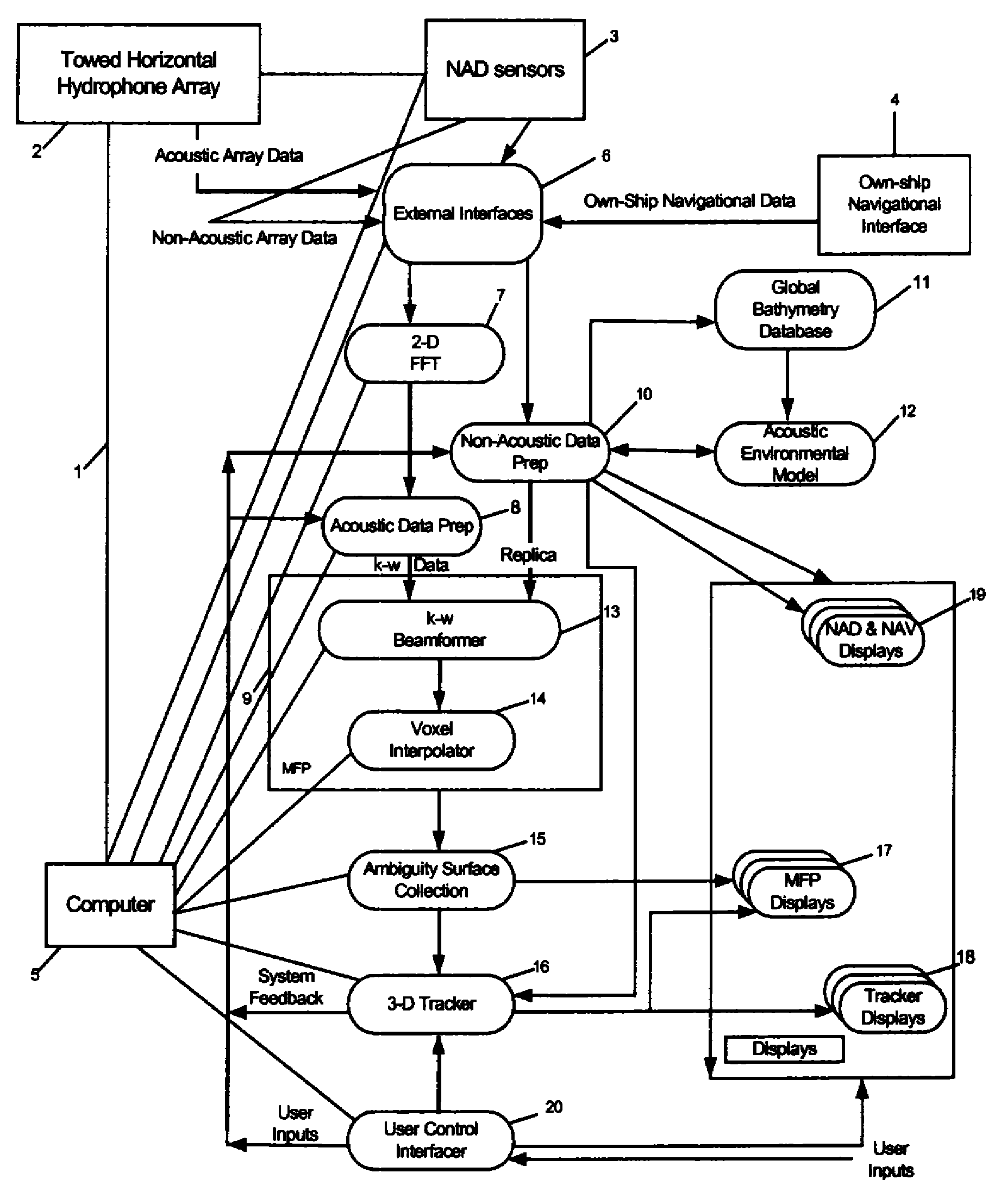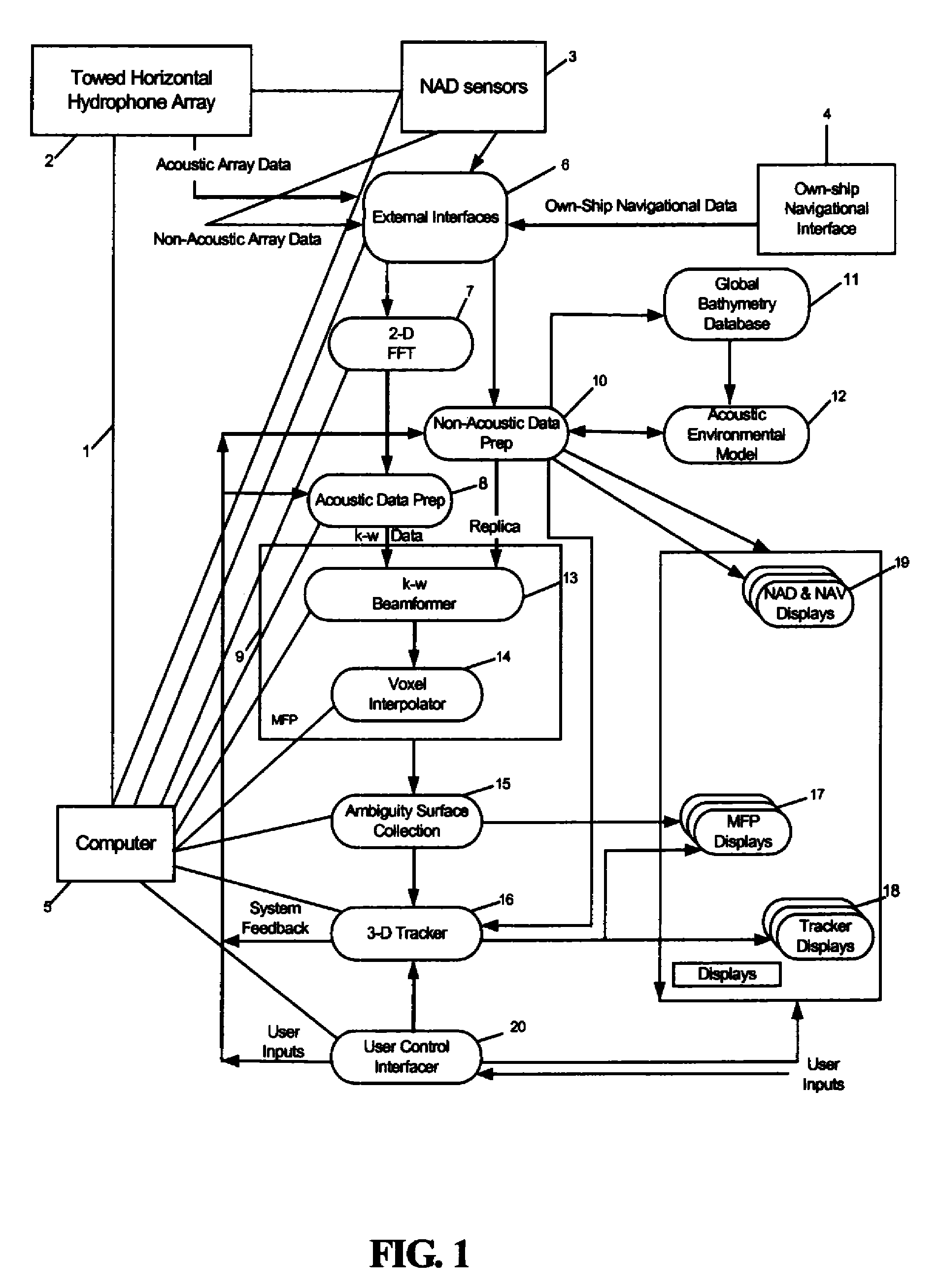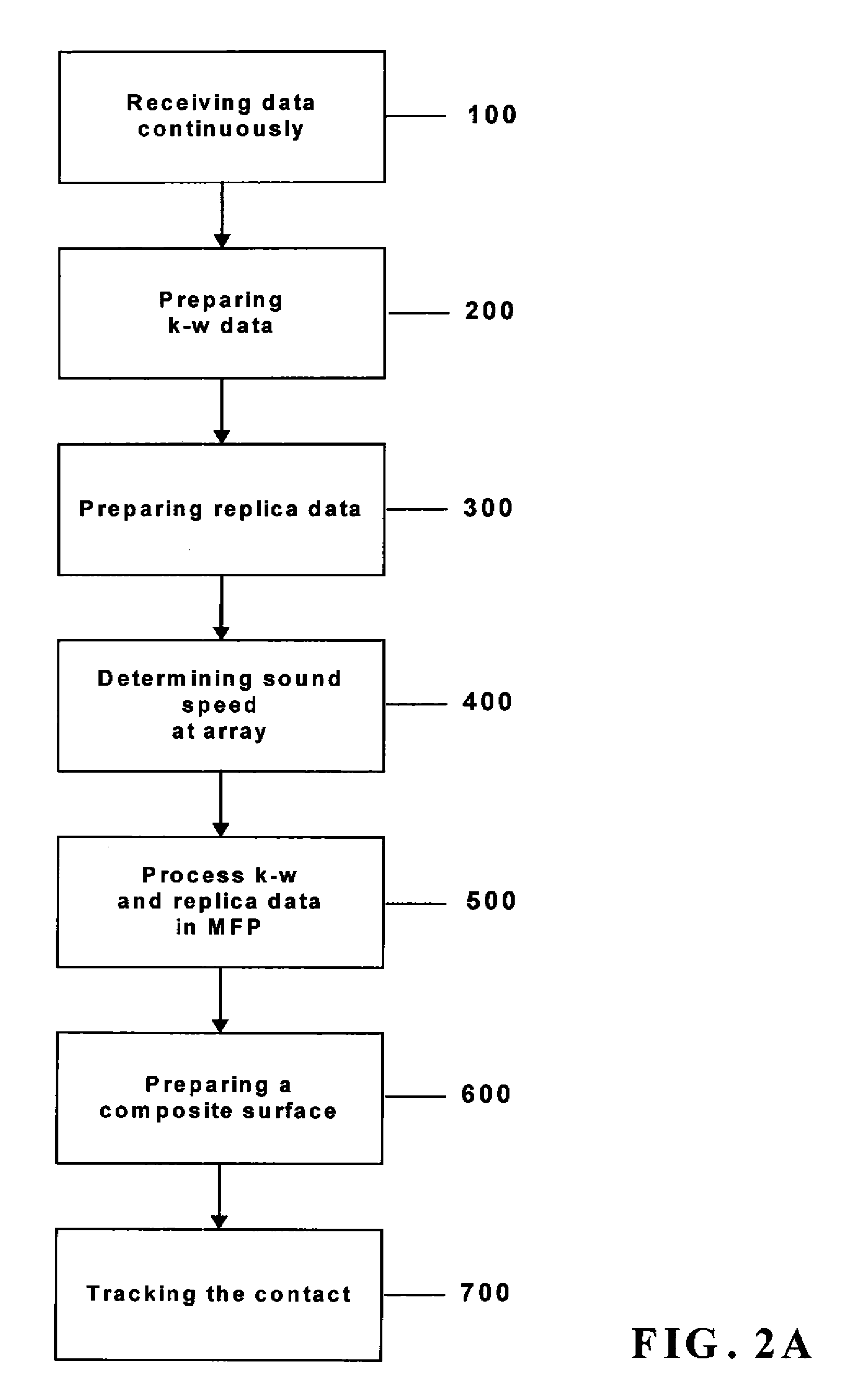Point source localization sonar system and method
a sonar system and point source technology, applied in the field of sonar systems and methods, can solve the problems of reducing accuracy, requiring manual interaction, and extremely time-consuming processes, and achieve the effect of low cost and minimal space requirements
- Summary
- Abstract
- Description
- Claims
- Application Information
AI Technical Summary
Benefits of technology
Problems solved by technology
Method used
Image
Examples
Embodiment Construction
[0037]The present invention is a matched-field based point source localization (PSL) sonar system 1 and method of use.
[0038]FIG. 1 is a block diagram of the point source localization (PSL) sonar system 1. The PSL system 1 includes a towed, mobile, single-line horizontal hydrophone array 2 along with non-acoustic data (NAD) sensors 3, and an own-ship navigational interface 4. The array 2 receives acoustic signals in the water by hydrophones. The array 2 is also equipped with non-acoustic sensors 3 to allow measurement of forward and aft depth, heading, and temperature status. Certain horizontal mobile arrays 2 can be modified to provide data from two different sets of non-acoustic sensors 3, one being from standard non-acoustic array data (NAD) sensors and the other from optional Engineering Modules (EMODs) which provide greater accuracy.
[0039]For purposes of the present invention one or both sets of non-acoustic sensors 3 may be utilized, though both are preferred. The data is colle...
PUM
 Login to View More
Login to View More Abstract
Description
Claims
Application Information
 Login to View More
Login to View More - R&D
- Intellectual Property
- Life Sciences
- Materials
- Tech Scout
- Unparalleled Data Quality
- Higher Quality Content
- 60% Fewer Hallucinations
Browse by: Latest US Patents, China's latest patents, Technical Efficacy Thesaurus, Application Domain, Technology Topic, Popular Technical Reports.
© 2025 PatSnap. All rights reserved.Legal|Privacy policy|Modern Slavery Act Transparency Statement|Sitemap|About US| Contact US: help@patsnap.com



